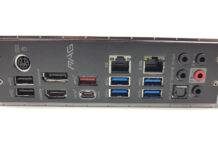With advancements in technology, you can now build a customized PC to fit your preferences and budget. However, determining the exact cost to build a PC isn’t straightforward. Let’s delve into the details to simplify your decision.
Key Takeaways
- The total cost of building a PC depends on the price of individual components such as the CPU, GPU, RAM, storage, motherboard, and power supply. Researching and selecting components that match your needs and budget is crucial.
- The level of customization and performance you desire will significantly affect the overall cost. High-end components and additional features will increase expenses, while budget-conscious choices can keep costs down.
- There are additional costs to consider, including peripherals (keyboard, mouse, monitor), and potential upgrade costs in the future. We encourage budgeting for these items to get a comprehensive understanding of the total expense.
Components Needed To Build A PC
If you’re looking to determine the cost of your PC build, start by assessing the components that will make up your rig. This will help you understand its power, speed, and overall cost.
- Central Processing Unit (CPU): When choosing a CPU, consider factors like architecture and clock speeds, as the number of cores alone isn’t the sole determinant of performance. Threads, which manage tasks, are also important, enabling multitasking and efficient data processing.
- Graphics Processing Unit (GPU): If you’re low on your budget, you might be interested in buying used graphics cards. If that’s the case, you should know how to check used graphics cards before buying.
- Motherboard: Motherboards come in various sizes, with ATX being the largest and Mini ITX the smallest. Larger motherboards are suitable for high-end builds, while smaller ones are cost-effective for budget setups.
- Random Access Memory (RAM): Higher-speed RAM moves data in and out faster, while greater capacity stores more data, enhancing system responsiveness and frame rates. RAM sizes vary, with 4GB suitable for basic builds, and 16GB ideal for high-end systems or demanding software. More RAM supports multitasking, with 8GB being a common choice.
- Power Supply Unit (PSU): Efficiency matters in a PSU, as it impacts energy consumption and heat generation.
- HDD/ SSD: When it comes to data storage, you have the choice between Hard Disk Drives (HDDs) and Solid State Drives (SSDs). While both serve the same purpose of storing data, they differ significantly in how they operate, impacting your PC build cost. If you require ample storage and are cost-conscious, an HDD is suitable. If speed is a priority, SSDs are the better option.
- CPU Cooler: CPU coolers come in two main types: Air and Liquid. If you’re building a high-end PC with top-quality components, liquid cooling is a superior choice for heat regulation, although it comes at a higher cost, which may not suit budget or mid-range setups.
- Case: You’ll want a high-quality PC case that accommodates your components properly. Mid-tower cases are a common choice, suitable for smaller motherboards with fewer expansion slots and cooling fan options, typically around 18 inches in height. If you have a larger motherboard, plan for future expansions, or desire more space for building, a Full Tower case is ideal.
- Monitor: For rendering purposes, a high-resolution, color-accurate, and large screen is ideal. Competitive gamers should prioritize high resolution and size for a competitive edge. If you’re a single-player enthusiast, consider a balance of moderate refresh rate, color range, and screen resolution. Lower refresh rates and screen resolutions are sufficient for daily tasks or office work.
- Other Components: Peripherals include items like the Mouse, Keyboard, Headset, or Speakers, which provide inputs and outputs for your PC.
Prioritizing Budget For PC Build
The budget is a pivotal decision that shapes your PC. Determine the type of PC you want and set a realistic budget. This will guide you in allocating your resources effectively for optimal performance and value. We’ll discuss component costs, build types, and budget expectations.
Budget Builds
For those new to computing or working with a limited budget, a budget PC is an ideal choice. Entry-level builds can be as affordable as $400, though performance and speed should be adjusted accordingly.
A budget build typically includes a modest CPU ($100 to $200) with the option of an integrated GPU or a separate GPU ($100 to $150). You’ll need a motherboard ($50 to $70), two 8GB DDR4 memory sticks ($40 to $60 each), a 240GB SSD ($30), and a quality PSU like the EVGA 450W with 80+ Bronze certification ($50 to $75). A mid-tower case of your choice can be added for around $40 to $60.
With this setup, you can achieve a consistent 60 FPS at 720p and even reach 1080p performance, all within the $400 to $700 range—a solid budget build. If you are confused about what to select, these guides on budget CPUs, CPU Coolers, and PC cases should help you out.
Mid-Tier Builds
Moving up to mid-tier builds, you can achieve satisfying power and processing speed for high-demanding games without breaking the bank.
You can start with a 4GB VRAM GPU, ranging from $150 to $300 or more. For processing, invest in a recent-gen CPU with 4 cores and 4 threads, costing around the same amount. Pair this with a compatible motherboard, priced between $100 and $140.
With RAM costs remaining at $40 to $60 per 8GB DDR4 stick, you can now afford a larger SSD, up to 1TB, for $80 to $100. Opt for a higher-quality PSU and PC case, each priced from $60 to $120. This mid-tier build starts at under $700, reaching up to $1200.
Expect consistent 1080p gaming with visually appealing and smooth performance, making it an ideal choice for casual gamers.
High-End Builds
Start with a high-quality CPU, priced from $400 to $450, such as the AMD 5000 Series Ryzen 9 or select Intel’s Alder Lake CPUs. Opt for the best-of-the-best GPU, like NVIDIA’s RTX 3090, costing around $1,500. Ensure a capable motherboard to support these components, with prices ranging from $330 to $550.
Include a liquid cooling system for component safety, ranging from $120 to $160. You can afford 32GB of RAM with 2 DDR4 sticks of 16GB each, priced between $100 and $140. Avoid storage issues with two 1 TB SSDs, costing $100 each or up to $170 for top-tier options.
House these components in a stylish mid-tower case, priced between $160 and $330, and use a gold-tier PSU, starting at $100 and reaching up to $180. This high-end PC falls within the price range of $3,000 to $4,000, but opting for flagship components can push it up to $5,000.
With these specs, you can effortlessly run demanding games and programs, achieving 144 FPS at ultra 4K with features like ray tracing and real-time shadows.
Cost Of Gaming PCs VS Traditional PCs
In today’s gaming landscape, high-performance GPUs and processing power are essential for a seamless gaming experience. While suitable for basic tasks, traditional PCs struggle to handle modern games effectively.
Gaming PCs feature powerful components, ensuring smooth gameplay, but they come at a higher cost than traditional PCs. The price difference reflects their varying performance capabilities.
In summary, gaming PCs offer superior performance but come at a higher price point. If budget constraints are a concern, a traditional PC may suffice for light work, but gaming PCs are essential for playing the latest games.
High-End Gaming PC VS Budget PC
High-end gaming PCs offer top-tier performance and premium components, ideal for gaming enthusiasts and demanding tasks. Budget PCs, in contrast, are less powerful and suitable for basic use, making them more budget-friendly.
Your choice between a high-end and budget PC depends on your budget and intended use. If gaming or resource-intensive tasks are your focus, a high-end gaming PC is the right choice. On the other hand, if your needs are limited to everyday tasks, such as web browsing and light office work, a budget PC can save you money.
Ultimately, the key is to align your PC choice with your specific requirements and budget, ensuring your computer supports your goals effectively.
Frequently Asked Questions
cts the PC performance[/wsfa]
Similar Guides:
Thank you! Please share your positive feedback. 🔋
How could we improve this post? Please Help us. 😔
[Wiki Editor]
Ali Rashid Khan is an avid gamer, hardware enthusiast, photographer, and devoted litterateur with a period of experience spanning more than 14 years. Sporting a specialization with regards to the latest tech in flagship phones, gaming laptops, and top-of-the-line PCs, Ali is known for consistently presenting the most detailed objective perspective on all types of gaming products, ranging from the Best Motherboards, CPU Coolers, RAM kits, GPUs, and PSUs amongst numerous other peripherals. When he’s not busy writing, you’ll find Ali meddling with mechanical keyboards, indulging in vehicular racing, or professionally competing worldwide with fellow mind-sport athletes in Scrabble at an international level. Currently speaking, Ali has completed his A-Level GCEs with plans to go into either Allopathic Medicine or Business Studies, or who knows, perhaps a full-time dedicated technological journalist.


![When Xbox Is Off, Turn Off Storage [Feature Explained] When Xbox Is Off, Turn Off Storage](https://tech4gamers.com/wp-content/uploads/2023/08/When-Xbox-Is-Off-Turn-Off-Storage.png)
![What Is A CPU Socket? [Explained]](https://tech4gamers.com/wp-content/uploads/2023/09/What-is-a-CPU-socket-218x150.jpg)

![Can Overclocking Damage The GPU? [Answered] Can Overclocking Damage The GPU](https://tech4gamers.com/wp-content/uploads/2022/10/Can-Overclocking-Damage-The-GPU-218x150.jpg)

